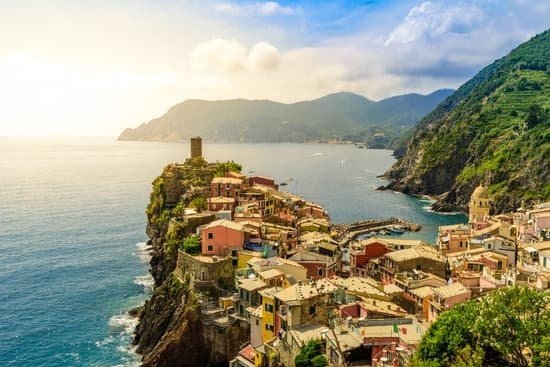Italy is a country known for its rich history, exquisite art, breathtaking landscapes, and delectable cuisine. It’s no wonder that many travelers dream of exploring this beautiful Mediterranean destination. However, with its popularity comes the potential for high travel costs. That’s why it’s important to plan your trip wisely to find the best deals and experience Italy without breaking the bank.
In this article, we will explore the best time to travel to Italy on a budget. We will delve into the peak travel seasons to avoid, as well as how weather considerations can affect travel prices. Additionally, we’ll discuss Italian festivals and events that can provide both cultural immersion and affordability.
Whether you’re a seasoned traveler or embarking on your first international adventure, this article will provide you with valuable tips and insights on how to plan a budget-friendly trip to Italy. By making informed decisions regarding flights, accommodations, transportation, food, and even lesser-known destinations, you’ll be able to enjoy all that Italy has to offer while staying within your budget constraints.
So if you’ve been dreaming of savoring authentic Italian cuisine in Rome or wandering through the charming streets of Florence without breaking the bank, read on to discover when it is cheap to travel to Italy and how you can make the most of your budget while experiencing everything this enchanting country has in store for you.
Italy’s Peak Travel Seasons
Italy is a popular tourist destination known for its rich history, stunning landscapes, and delicious cuisine. However, the popularity of Italy as a travel destination means that certain times of the year can be more crowded and expensive than others. In this section, we will discuss Italy’s peak travel seasons and why it’s best to avoid them if you’re looking for a budget-friendly trip.
Summer Crowds and High Prices
One of the peak travel seasons in Italy occurs during the summer months from June to August. During this time, tourists flock to Italy to enjoy the warm weather, vibrant festivals, and outdoor activities. However, with high demand comes higher prices. Flights, accommodations, and popular attractions are all more expensive during this time of year. Additionally, tourist destinations such as Rome, Florence, and Venice can become overcrowded with long queues and crowded streets.
Christmas and New Year
Another peak travel season in Italy falls during the Christmas holiday period from mid-December to early January. Many people choose to spend their holidays in Italy due to its festive atmosphere and charming Christmas markets. However, prices for flights and accommodations tend to skyrocket during this time. Popular attractions may also have limited availability or require advanced reservations.
Easter Time
Easter is another busy period in Italian tourism that should be avoided by budget-conscious travelers. Alongside religious pilgrims visiting Vatican City in Rome or attending religious events across the country, many tourists take advantage of the long weekend to visit Italy’s famous cities or countryside regions. Prices for flights and accommodations surge during Easter week while attractions often suffer from increased crowds.
By avoiding these peak travel seasons in Italy, you can save money on flights, accommodations, and even attractions. If you have flexibility with your travel dates, consider planning your trip during off-peak or shoulder seasons to enjoy more affordable prices and a more relaxed experience.
Off-Peak Season
The off-peak season in Italy is the best time for travelers to score cheap flights. This period typically falls outside of the country’s peak travel seasons, when prices for flights and accommodations tend to be much higher. The off-peak season varies depending on the region, but generally includes the months of November through March.
During this time, airlines often offer discounted fares and promotions to encourage travelers to visit Italy. Many airlines also reduce their flight frequencies during the off-peak season, resulting in lower demand and cheaper ticket prices. Additionally, airports may have fewer crowds and shorter lines, making the overall travel experience more enjoyable.
It is important to note that while cheap flights can be found during the off-peak season, it is advisable to book in advance as prices may increase as the departure date approaches. Researching and comparing flight options from different airlines and travel websites can also help travelers find the best deals.
| City | Average Flight Price (Round Trip) |
|---|---|
| Rome | $500 |
| Florence | $450 |
| Venice | $550 |
| Naples | $400 |
These are just approximate figures and actual prices may vary depending on factors such as departure city, airline, and booking dates. However, this table gives a general idea of what travelers can expect in terms of flight prices during the off-peak season in Italy. By planning ahead and taking advantage of the cheaper fares available during this time, travelers can save a significant amount of money on their trip to Italy.
Weather Considerations
Italy’s climate varies from region to region, with the north experiencing cooler winters and the south enjoying a Mediterranean climate. The weather plays a significant role in travel prices, as tourists flock to Italy during specific seasons when the weather is most favorable. Understanding how weather affects travel prices can help you plan a budget-friendly trip to Italy.
During the peak summer months of June to August, Italy experiences its highest influx of tourists. This is when prices for accommodations, flights, and attractions are at their highest. The warm and sunny weather during this time attracts visitors from all over the world who want to experience Italy’s famous beaches, outdoor cafes, and historic landmarks. If you’re on a tight budget, it’s best to avoid traveling during these months as prices tend to skyrocket.
On the other hand, visiting Italy during the winter season from November to February can lead to significant savings on travel expenses. The colder temperatures and occasional rain deter many tourists from visiting during this time, resulting in lower prices for flights, accommodations, and attractions.
However, it’s important to note that some tourist sites may have limited opening hours or be closed altogether during the winter season, so it’s best to check in advance if there are any specific attractions you’re interested in visiting.
For travelers seeking a balance between good weather and affordable prices, shoulder seasons such as spring (March to May) and autumn (September to October) are ideal. These seasons offer mild temperatures and fewer crowds compared to the peak summer months. You’ll still be able to enjoy pleasant weather while taking advantage of lower travel costs before or after the busy tourist season.
Italian Festivals and Events
Italy is known for its rich culture and vibrant festivals and events. If you are looking to immerse yourself in the Italian culture while sticking to a budget, timing your trip to coincide with these festivals and events can be a great strategy. Not only will you get to experience the unique traditions and celebrations, but you may also find cheaper travel options and accommodations during these times.
One popular festival in Italy is the Carnivale, which takes place in various cities across the country. Known for its elaborate masks and costumes, Carnivale is a lively event filled with parades, music, and dancing.
Venice is particularly famous for its Carnivale celebrations, where you can witness the iconic gondolas floating along the canals as people dressed in ornate costumes stroll through the streets. The festival usually takes place in February or early March, so planning your trip around this time can offer an unforgettable cultural experience at a potentially lower cost.
Another event worth considering is the Infiorata Festival in Spello, held annually on Corpus Christi Sunday. During this festival, the town’s streets are decorated with intricate floral carpets depicting religious symbols and scenes. The vibrant colors and fragrant aromas create a mesmerizing atmosphere that attracts visitors from all over the world. This festival not only allows you to witness a unique form of art but also immerse yourself in the religious traditions of Italy.
Aside from traditional festivals, Italy hosts numerous food festivals throughout the year that cater to different tastes and budgets. From truffle festivals to wine tastings and street food fairs, these events showcase Italy’s culinary delights at affordable prices. Attending these food festivals can be a fun way to indulge in authentic Italian cuisine without breaking the bank.
| Festival/Event | Approximate Timing |
|---|---|
| Carnivale | February or early March |
| Infiorata Festival | Corpus Christi Sunday (varies each year) |
| Truffle Festivals | Various dates throughout the year (depends on the region) |
| Wine Festivals | Throughout the year (depends on the region) |
Shoulder Seasons
Italy’s shoulder seasons, which fall between the peak and off-peak travel periods, are an ideal time to visit the country if you are looking for a balance of good weather and affordable prices. During these transitional periods, you can avoid the crowds and high costs that come with peak season while still enjoying pleasant weather and a wide array of cultural events.
Spring Shoulder Season: Blooming Landscapes and Vibrant Festivals
One of the best times to experience Italy’s shoulder season is during spring. From March to May, the landscapes in Italy burst with colorful blooms, making it a picturesque time to explore the country. The weather during this period is generally mild, with temperatures gradually warming up as spring progresses. Additionally, you will find that flight and hotel prices are more reasonable compared to the peak summer months.
During spring shoulder season, Italy hosts various festivals and events that showcase its rich culture and traditions. One notable event is Easter, which is celebrated nationwide with processions, religious ceremonies, and elaborate feasts. Other festivals include La Festa della Primavera (Spring Festival) in Rome, where locals gather for open-air concerts and art exhibitions, as well as the Venice Carnival that takes place in late February or early March.
Fall Shoulder Season: Autumn Colors and Harvest Festivities
Another opportune time to visit Italy during its shoulder season is in the fall months of September to November. As summer comes to an end, temperatures start cooling down gradually, creating comfortable conditions for sightseeing without facing excessive heat or crowds. Additionally, autumn brings a stunning display of colors to Italy’s landscapes as trees change their foliage hues.
Fall in Italy is also synonymous with harvest festivals such as the Mostra del Vino (Wine Exhibition) in Tuscany and the truffle festival in Alba. These events offer visitors a chance to taste regional delicacies at lower prices compared to peak season. Furthermore, fall is an excellent time to visit Italy’s renowned wine regions, as many wineries hold special events and vineyard tours during this period.
By planning your trip to Italy during the shoulder seasons of spring or fall, you can enjoy a perfect blend of pleasant weather, lesser crowds, and affordable prices. Whether you are interested in witnessing blooming landscapes, immersing yourself in cultural festivities, or indulging in regional cuisine, these transitional periods offer the ideal balance for a budget-friendly Italian adventure.
Accommodation Deals
When planning a budget-friendly trip to Italy, finding affordable accommodation is essential. Luckily, there are several ways to save money on lodging while still enjoying comfortable and convenient accommodations.
One option for finding wallet-friendly accommodation in Italy is to consider staying in budget hotels or hostels. These types of accommodations often offer basic amenities at a lower price compared to luxury hotels. Hostels, in particular, can be a great option for solo travelers or those looking to meet other like-minded travelers.
Another way to find affordable accommodations is by booking through online travel agencies or hotel comparison websites. These platforms allow you to compare prices and find the best deals on hotels across Italy. Additionally, some websites and apps offer last-minute booking options or flash sales, which can provide significant discounts on accommodation prices.
For those who prefer a more unique experience, consider renting an apartment or vacation home. By opting for these types of accommodations, you not only get more space but also the opportunity to cook your own meals and save even more on dining expenses.
Lastly, don’t forget to consider alternative accommodation options such as bed and breakfasts or agriturismos. These types of properties are often family-owned and provide a more local and personalized experience for guests. They can be an excellent option for those looking for affordable yet charming accommodations away from the hustle and bustle of city centers.
In summary, there are various options available when searching for wallet-friendly accommodation in Italy. From budget hotels and hostels to apartment rentals and unique bed and breakfasts, there’s something for every traveler’s preferences and budget. By using online travel agencies, taking advantage of last-minute deals, and considering alternative accommodations, visitors can find affordable places to stay without compromising comfort or convenience.
| Accommodation Option | Average Price Range (per night) |
|---|---|
| Budget Hotels | $50-$100 |
| Hostels | $20-$60 |
| Rental Apartments/Vacation Homes | $80-$150 |
| Bed and Breakfasts/Agriturismos | $70-$120 |
Transportation Tips
Italy has an extensive transportation system that allows travelers to easily explore the different cities and regions of the country. However, transportation costs can quickly add up, especially if you’re not familiar with the options available. To help you save money on travel within Italy, here are some transportation tips:
Use Public Transportation
One of the most cost-effective ways to get around Italy is by using public transportation such as buses and trains. Major cities like Rome, Florence, and Venice have reliable and efficient public transportation systems that can take you to popular tourist destinations at a fraction of the cost of taxis or private transfers.
Consider Regional Trains
If you’re planning to visit multiple cities within a specific region, consider taking regional trains instead of high-speed trains. Regional trains may take longer to reach your destination but are significantly cheaper than their faster counterparts.
Book Train Tickets in Advance
If you’re set on taking high-speed trains between major cities or popular tourist destinations, it’s advisable to book your tickets in advance. Train tickets tend to be more expensive when purchased closer to the travel date, so booking early can help you secure better deals.
Opt for Buses
Buses are another affordable option for traveling within Italy, particularly for shorter distances or when visiting smaller towns and villages that may not be connected by train lines. Companies like FlixBus offer budget-friendly bus services that cover various routes across the country.
Bike Rentals
For a unique and eco-friendly way to explore Italian cities, consider renting bikes. Many cities have dedicated bike lanes and bike-sharing programs that allow visitors to easily get around while enjoying the sights at their own pace.
Remember to research specific transportation options in each city or region you plan to visit in Italy. This will help you find the most cost-effective and convenient ways to travel during your trip. By saving money on transportation, you can allocate more of your budget towards experiencing the rich culture, delicious cuisine, and breathtaking sights that Italy has to offer.
Eating on a Budget
Italy is renowned for its delicious cuisine, and no trip to the country would be complete without indulging in its authentic dishes. However, dining out can often be a significant expense when traveling. Fortunately, there are ways to sample Italian cuisine without breaking the bank. By seeking out local favorites and avoiding tourist traps, you can savor traditional flavors while sticking to your budget.
Explore Local Markets
One of the best ways to experience Italian cuisine on a budget is by visiting local markets. Here, you can find an abundance of fresh produce, cheeses, cured meats, and more at affordable prices. Take advantage of these markets to gather ingredients for a picnic or to cook your own meals if you have access to a kitchen during your stay.
Opt for Aperitivo
Aperitivo is a popular Italian tradition where bars offer free snacks or small plates alongside drinks during happy hour. This allows tourists on a budget to enjoy tasty bites like bruschetta, olives, and cheese while enjoying their favorite beverages at reduced prices. Aperitivo often starts around 6:00 PM and can be found in major cities throughout Italy.
Seek Out Trattorias
Trattorias are small casual restaurants that serve authentic Italian dishes at more affordable prices compared to upscale restaurants or tourist-oriented establishments. These family-run eateries offer simple yet delicious fare that showcases regional specialties. Not only will you get a taste of genuine Italian cuisine, but you’ll also save some money by avoiding high-end restaurants.
While exploring Italy’s culinary scene on a budget may require some planning and research, it is certainly possible to enjoy authentic Italian cuisine without spending a fortune. Whether you’re indulging in local markets, embracing the tradition of Aperitivo, or dining at trattorias, experiencing Italy’s food culture doesn’t have to break the bank. Bon appétit.
Hidden Gems
Italy is known for its famous cities such as Rome, Florence, and Venice, but there are also many hidden gems waiting to be discovered by budget travelers. These affordable and lesser-known Italian destinations offer unique experiences without breaking the bank. Here are some of these hidden gems that you should consider visiting on your budget-friendly trip to Italy:
- Cinque Terre: Located on the Italian Riviera, Cinque Terre is a picturesque coastal region made up of five colorful fishing villages. Explore the narrow streets filled with charming houses, visit local vineyards, and enjoy breathtaking views of the Mediterranean Sea. The best part is that Cinque Terre is easily accessible by train and offers affordable accommodations and dining options.
- Bologna: Known as Italy’s food capital, Bologna offers a delightful culinary experience for budget travelers. Enjoy fresh pasta dishes, local wines, and traditional gelato at affordable prices. Don’t miss visiting Piazza Maggiore, the city’s main square surrounded by beautiful architecture. Bologna also has a rich history and boasts medieval towers that provide stunning panoramic views of the city.
- Matera: Located in southern Italy’s Basilicata region, Matera is famous for its ancient cave dwellings known as “Sassi.” This UNESCO World Heritage site offers a unique glimpse into prehistoric living while still providing modern amenities for visitors. Explore the narrow alleyways and cave churches or enjoy panoramic views from one of the many viewpoints scattered throughout the town.
- Lucca: Tucked away in Tuscany, Lucca is often overlooked by tourists in favor of more well-known cities like Florence or Pisa. However, this charming town has a lot to offer without the crowds or high prices. Walk along its well-preserved Renaissance walls or explore its historic center filled with cobblestone streets and quaint squares.
When planning your budget-friendly trip to Italy, consider including these hidden gems in your itinerary. Not only will you get to experience the beauty and charm of these lesser-known destinations, but you’ll also save money compared to more popular tourist hotspots. Whether it’s enjoying mouthwatering local cuisine in Bologna or exploring ancient cave dwellings in Matera, these affordable Italian destinations offer a memorable experience without breaking the bank.
Conclusion
Planning a budget-friendly trip to Italy requires careful consideration of various factors, such as peak travel seasons, weather conditions, festivals and events, shoulder seasons, accommodation deals, transportation tips, eating on a budget, and discovering hidden gems. By analyzing these aspects, travelers can determine the best time to visit Italy while saving money.
To start with, avoiding peak travel seasons is crucial for scoring cheap flights and accommodation. The summer months from June to August are particularly busy and expensive in tourist hotspots like Rome and Florence. Instead, travelers should consider visiting during the off-peak season when prices are lower and attractions are less crowded.
Weather considerations also play a significant role in determining travel prices. Traveling during the shoulder seasons of spring (April-May) or fall (September-October) provides a balance of good weather and affordable prices. The crowds have dispersed, allowing tourists to enjoy popular destinations comfortably without breaking the bank.
Timing your trip around Italian festivals and events can lead to an enriching cultural experience at reasonable costs. Attending festivals such as Carnevale in Venice or the Siena Palio can provide an immersive cultural experience without straining your wallet. Planning ahead and aligning your visit with these events will ensure that you make the most of your trip while keeping costs low.
In conclusion, planning a budget-friendly trip to Italy requires careful consideration of various factors. By avoiding peak travel seasons, choosing the shoulder seasons for better weather and affordability, taking advantage of accommodation deals, utilizing transportation tips wisely, exploring authentic Italian cuisine on a budget, and uncovering hidden gems outside popular tourist destinations – travelers can optimize their savings while immersing themselves in the beauty of Italy’s rich culture and history.
With a bit of research and flexibility in travel plans, one can enjoy an unforgettable trip to Italy without breaking the bank.
Frequently Asked Questions
When should I go to Italy for a budget?
If you are traveling to Italy on a budget, it is advisable to visit during the shoulder season, which typically falls between April and May or September and October. During these months, the weather is still pleasant, and tourist crowds are generally lower than in the peak summer months.
This means that you can often find better deals on accommodation, attractions, and even transportation. Additionally, by avoiding major holidays or events, such as Easter or fashion week in Milan, you can further minimize costs.
What is the best month to go to Italy?
Determining the best month to visit Italy depends on your preferences and priorities. Generally, April to June and September to October are considered the best months due to their mild temperatures and fewer tourists compared to July and August when many Italians go on vacation.
Spring and fall allow you to explore popular destinations like Rome, Florence, or Venice without encountering excessively long lines at attractions or overcrowded streets. However, if you wish to experience Italy at its liveliest with festivals and outdoor activities, summer months might be more appealing despite the higher number of visitors.
Do flights to Italy get cheaper closer to the date?
The cost of flights to Italy can vary depending on multiple factors such as the airline carrier, departure city, time of year, and demand for tickets. While there is no guarantee that flight prices will decrease closer to the departure date, it is often observed that airlines occasionally offer last-minute deals or discounted fares to fill empty seats. It’s worth monitoring flight prices well in advance of your desired travel dates as ticket prices tend to fluctuate over time due to demand and availability.
However, waiting until the last minute can also be risky as ticket prices may rise significantly if demand remains high close to the travel date. Ultimately, finding cheaper flights requires flexibility in terms of travel dates and diligent research as early booking might secure better deals in most cases.

I’m a passionate traveler, writer, and Italophile. My fascination with Italy’s history, art, and culture has led me on countless adventures across the Italian landscape. Through “I Live Italy,” I share my love for this extraordinary country and aims to inspire others to explore its boundless beauty.





